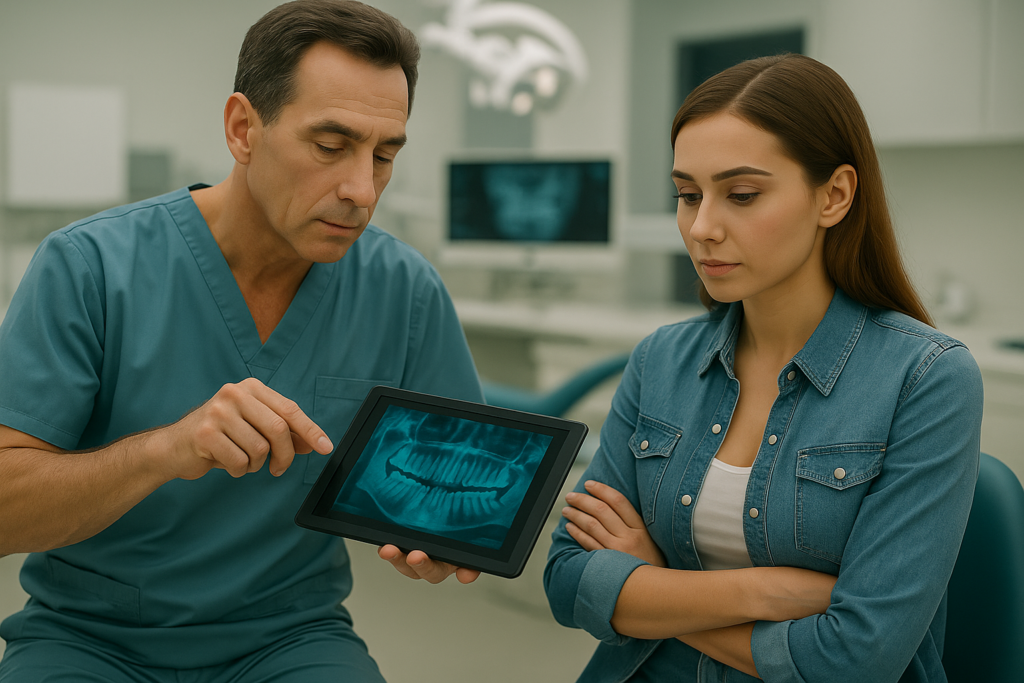Why the dental industry should embrace the concept of open data
Practices need to turn to non- restrictive platforms that enable patient data to move freely between providers, systems and patients.

In an age where smartphones track our steps and medical portals let us view test results within hours, dentistry remains surprisingly behind in one critical area – data access.
Unlike medical patients who routinely use platforms like MyChart to access their health records, dental patients are often locked out of their own information, and dentists are similarly restricted from sharing or receiving it efficiently. The root of this problem lies in the lack of open data and interoperability across dental systems.
Open data refers to information that can be freely accessed, used and shared across platforms without restrictive barriers. In healthcare, it means patient data can move securely and seamlessly between providers, systems and patients themselves. This principle is widely accepted in medicine yet remains a foreign concept in much of dentistry.
Looking to other industries can provide clues to the way forward. For example, medical healthcare has achieved progress via the 21st Century Cures Act and FHIR standards adoption, leading to 57 percent of hospitals using FHIR APIs for patient data exchange by 2022, according to the Office of the National Coordinator for Health Information Technology.
The consequences of the data gap in dentistry are significant. For patients, it leads to repeated X-rays, poor continuity of care and frustrating delays. For dentists, it creates operational inefficiencies, diagnostic blind spots and higher overhead costs.
Embracing open data in dentistry is not just a matter of modernization; it's essential for better care, regulatory compliance, and innovation.
Why it matters: 3 key stakeholders
Open data matters to three primary groups – dental practices, patients and technology vendors.
For dental practices, data portability is foundational to accurate diagnosis and treatment. Today, when a new patient walks through the door, practices often receive no useful history. Essential records like notes, imaging or treatment plans are trapped in proprietary formats or siloed in other software. This creates opportunities for misdiagnosis and failed treatment.
Simply put, practices can't deliver optimal care without access to the full clinical picture.
Patients are also deeply affected. Lack of data access limits their ability to make informed decisions. For instance, patients moving to new cities often must start from scratch because prior records are not transferable. Or worse, they undergo redundant imaging that increases costs and radiation exposure.
Empowering patients with control over their dental data — as they legally have under HIPAA and the 21st Century Cures Act — could dramatically improve care experiences and outcomes.
Technology vendors face similar challenges. The current landscape is dominated by practice management systems that use outdated, proprietary APIs, making integration difficult and stifling innovation. Startups with advanced diagnostic tools or artificial intelligence capabilities can't reach full potential without open access to the data necessary to power their solutions.
Regulations are already here
A common misconception is that dentistry is exempt from the federal regulations requiring data interoperability. It's not.
The 21st Century Cures Act mandates that all healthcare providers, including dentists, avoid information blocking and ensure patients have access to their data in a timely and secure manner. HIPAA also mandates data portability. Yet compliance in dentistry remains low, because in part to a lack of awareness and enforcement.
Fines for violations can reach large dollar amounts per incident, and with federal attention increasingly turning toward dental practices, this is not an area to ignore. Ignorance of the law is not an excuse. Vendors and practices alike are already accountable, whether or not they've been penalized yet.
Practical steps for dentists
What can a dentist do today to support open data? First, demand transparency and compliance from your technology vendors. Ask if they support standards like ADA Standard 1111 and DSI Standard EEDRA (THOR) for electronic dental records. If they don't, it may be time to look for alternatives.
Second, educate yourself and your team on federal regulations like the 21st Century Cures Act. Resources and guides exist that outline what compliance means and how to achieve it.
Third, advocate for your patients. Make it easier for them to access their data through patient portals or secure mobile apps, like Cair. When patients understand and own their data, they become partners in care, not just recipients.
Finally, participate in professional forums or organizations advocating for interoperability. The more unified the provider voice, the more momentum the movement toward open data will gain.
A call for industry maturity
Dentistry is one of the largest sectors in healthcare, yet it continues to operate in silos. That era must end.
The barriers to open data are not technological. Rather, they are cultural and commercial. By shifting our mindset and demanding better, we can create a future where information flows freely, patients are empowered, and innovation thrives.
Open data is not a trend. It’s the future of healthcare. Dentistry should embrace it — not because it’s mandated, but because it’s right.
Dr. Bryan Laskin is co-founder of Toothapps and a consultant for Vyne Dental.